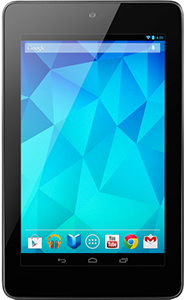The New York Times reports that Google has entered a partnership with the largest eyeglass company in the world, Luxottica Group, to design, manufacture and distribute frames for Google Glass, adding another piece to our on-going discussion here at Mobile Mind regarding the future of wearable computers. The Times also pointed out that some bars have banned patrons from wearing Google Glass, lawmakers see them as a distraction to drivers, and Homeland Security recently interrogated an Ohio man who was removed from a theater for wearing them. Questions about security, safety, and copyright infringements abound. 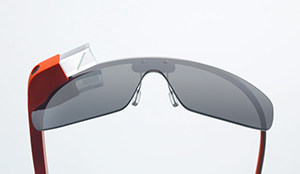 Adding Ray-Ban and Oakley frames to Google Glass represents an effort to overcome the fashion objections. But we see additional market challenges to Google Glass, as well as some unmentioned opportunities.
Adding Ray-Ban and Oakley frames to Google Glass represents an effort to overcome the fashion objections. But we see additional market challenges to Google Glass, as well as some unmentioned opportunities.
Beauty may be in the eye of the beholder, but the acceptance of Google Glass may depend upon which side of the lens you’re on. This is where we see a particular advantage for Google Glass, not as a fashion statement, but as an occupational tool. Where the public senses a reasonable expectation or rationale for scrutiny, like in medicine or law enforcement, they might be more receptive to being observed through a smart lens by a doctor or a first responder in an emergency, rather than a creep on a barstool. In fact, Google Glass on the other side of the bar could afford wait staff (or bouncers) another chance for ID verification and a reduction in liability, if patrons could accept that. We think Google Glass could serve as a valid diagnostic tool for medical professionals, and an aid in reviewing and organizing cloud-based medical and insurance records. They might even enhance your doctor’s powers of observation, noting changes from one visit to the next. Of course, if you’re already intimidated by the State Trooper approaching your car in dark glasses, imagine the extra apprehension and sense of resignation when you know behind those shades he’s gathering information about you, your vehicle, and your passengers.
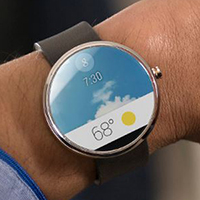 Or imagine Google Glass for TSA when you’re standing in the security line at the airport. Questions about profiling are reduced or eliminated if we’re all caught in the same Net. That friendly chat with the gate agent could have new implications when they add facial recognition and biometric readings for all: an arbitrary intrusion or the democratization of scrutiny?
Or imagine Google Glass for TSA when you’re standing in the security line at the airport. Questions about profiling are reduced or eliminated if we’re all caught in the same Net. That friendly chat with the gate agent could have new implications when they add facial recognition and biometric readings for all: an arbitrary intrusion or the democratization of scrutiny?
As for “the masses”, we think they’ll see particular advantages over Google in owning one of the many smart watches about to flood the market. For instance, we don’t anticipate anyone being pulled over (or punched out) for checking their watch. And their low profile should serve as a plus versus the more conspicuous hand-held or nose-perched devices. Of course, we look forward to the expansion of wrist-worn devices as flexible displays are improved, allowing them to be embedded in a sleeve or other parts of clothing. Then the question will move from “What are you looking at?” to “What are you wearing?”

 We love Dahlonega, Lumpkin County and north Georgia and are eager to support our community in any way possible. That includes providing Mobile Mind technologies for local groups and organizations utilizing local talent and resources in their development. The demand for mobile apps continues to grow, not just globally but in our local community. But until recently, finding skilled and educated individuals in the local community to help us build these applications has been extremely difficult. However, that is about to change.
We love Dahlonega, Lumpkin County and north Georgia and are eager to support our community in any way possible. That includes providing Mobile Mind technologies for local groups and organizations utilizing local talent and resources in their development. The demand for mobile apps continues to grow, not just globally but in our local community. But until recently, finding skilled and educated individuals in the local community to help us build these applications has been extremely difficult. However, that is about to change.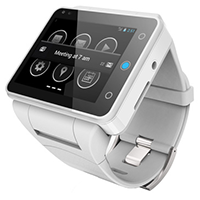 The “Pine” claims to be an all-in-one smartwatch with the functionality of a full-size Android smartphone. It is the creation of Canadian company Neptune Computers that managed to gather over eight times their initial pledge goal of $100,000 on
The “Pine” claims to be an all-in-one smartwatch with the functionality of a full-size Android smartphone. It is the creation of Canadian company Neptune Computers that managed to gather over eight times their initial pledge goal of $100,000 on 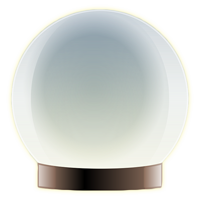
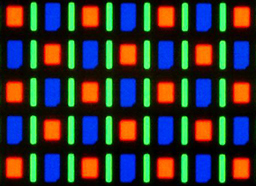 But are there limits to just how sharp and clear an image a screen can display? Technologically there appears to be no end in sight (pardon the pun) with new devices coming out every year with higher and higher pixel densities. But what about the human eye? Are there limits to how many pixels we can actually discern in a given inch of space? According to late Apple founder Steve Jobs the “magic number” is about 300 PPI for a device held 10 to 12 inches from your eye’s retina. With a pixel density of 326 PPI it is easy to understand how Apple came up with the name “Retina Display” for the screens of its newer iPhones, iPods and iPads. Although some would argue that the number is higher it is generally accepted as correct for a person with 20/20 vision. Of course the closer a device is held to the eye the higher the pixel density it can perceive.
But are there limits to just how sharp and clear an image a screen can display? Technologically there appears to be no end in sight (pardon the pun) with new devices coming out every year with higher and higher pixel densities. But what about the human eye? Are there limits to how many pixels we can actually discern in a given inch of space? According to late Apple founder Steve Jobs the “magic number” is about 300 PPI for a device held 10 to 12 inches from your eye’s retina. With a pixel density of 326 PPI it is easy to understand how Apple came up with the name “Retina Display” for the screens of its newer iPhones, iPods and iPads. Although some would argue that the number is higher it is generally accepted as correct for a person with 20/20 vision. Of course the closer a device is held to the eye the higher the pixel density it can perceive. Jules Verne is one of the pioneers of science fiction. He kept close tabs on the cutting-edge science of his day and utilized this knowledge in his writings which often made logical, if not eerily accurate, predictions concerning future technologies. In his novel Twenty Thousand Leagues Under the Sea the submarine Nautilus is equipped with features that did not exist in Verne’s time but would become standard in the years to come. The Nautilus is completely operated by electrical power including its propulsion, lighting and even cooking — a novel idea for any marine vessel in 1870. Electricity was generated by what was essentially a giant renewable sodium/mercury-carbon battery, a primitive analog to today’s experimental sodium-ion batteries. The submarine utilized fluorescent lighting several years before the invention of the electric light bulb. Electricity was also used to distill fresh water from sea water and compress surface air into tanks. The vessel also contained integrated airlocks from which divers wearing air tanks and regulators could enter and exit the ship. All of this described decades before the invention of SCUBA gear.
Jules Verne is one of the pioneers of science fiction. He kept close tabs on the cutting-edge science of his day and utilized this knowledge in his writings which often made logical, if not eerily accurate, predictions concerning future technologies. In his novel Twenty Thousand Leagues Under the Sea the submarine Nautilus is equipped with features that did not exist in Verne’s time but would become standard in the years to come. The Nautilus is completely operated by electrical power including its propulsion, lighting and even cooking — a novel idea for any marine vessel in 1870. Electricity was generated by what was essentially a giant renewable sodium/mercury-carbon battery, a primitive analog to today’s experimental sodium-ion batteries. The submarine utilized fluorescent lighting several years before the invention of the electric light bulb. Electricity was also used to distill fresh water from sea water and compress surface air into tanks. The vessel also contained integrated airlocks from which divers wearing air tanks and regulators could enter and exit the ship. All of this described decades before the invention of SCUBA gear.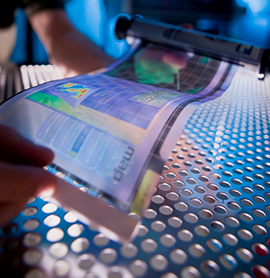 In anticipation of these revolutionary changes Mobile Mind has expanded its products and services beyond native mobile application development. We now offer hybrid application development services and are planning to release some of our own hybrid apps in the future. Hybrid apps allow companies with robust Web sites and infrastructures to utilize their current Web presence and investments while allowing them to enter the native OS markets. Hybrid apps are more platform independent than native apps and therefore easier to build for a wide variety of operating systems and devices. Hybrid apps are also easier to maintain because at least part of their content is stored on an external server. Mobile Mind also offers responsive Web design services to select clients whose audience is more widely reached via the World Wide Web than with mobile device applications. Mobile Web apps provide the greatest platform independence and the easiest maintenance compared to native and hybrid apps. This flexibility and control can be extremely useful for companies who wish to readily display their online content on the widest variety of mobile devices both now and in the future.
In anticipation of these revolutionary changes Mobile Mind has expanded its products and services beyond native mobile application development. We now offer hybrid application development services and are planning to release some of our own hybrid apps in the future. Hybrid apps allow companies with robust Web sites and infrastructures to utilize their current Web presence and investments while allowing them to enter the native OS markets. Hybrid apps are more platform independent than native apps and therefore easier to build for a wide variety of operating systems and devices. Hybrid apps are also easier to maintain because at least part of their content is stored on an external server. Mobile Mind also offers responsive Web design services to select clients whose audience is more widely reached via the World Wide Web than with mobile device applications. Mobile Web apps provide the greatest platform independence and the easiest maintenance compared to native and hybrid apps. This flexibility and control can be extremely useful for companies who wish to readily display their online content on the widest variety of mobile devices both now and in the future.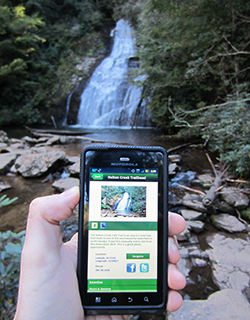 The term “mobile application” is usually used to describe a piece of software designed to run on smartphones, tablets and other mobile devices. However a truly mobile app is one that is used while traveling and for travel and therefore typically utilizes a host of technologies such as GPS and Internet connectivity via Wi-Fi, 3G and/or 4G. But as many travelers that use mobile devices will attest, the availability of these technologies can be uncertain and even nonexistent at times.
The term “mobile application” is usually used to describe a piece of software designed to run on smartphones, tablets and other mobile devices. However a truly mobile app is one that is used while traveling and for travel and therefore typically utilizes a host of technologies such as GPS and Internet connectivity via Wi-Fi, 3G and/or 4G. But as many travelers that use mobile devices will attest, the availability of these technologies can be uncertain and even nonexistent at times.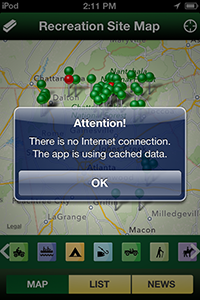
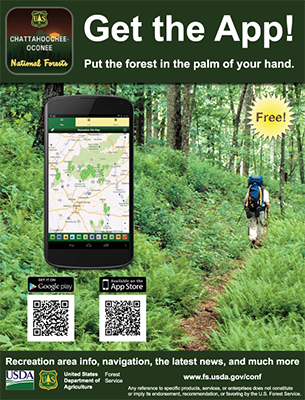
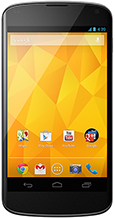 Google’s Nexus phones and tablets are currently hot sellers. All models feature Wi-Fi and Bluetooth but the Nexus 4 and some Nexus 7 models are also compatible with HSPA+ wireless networks. But what exactly is HSPA+? This question is not an uncommon one, particularly here in the United States where we are more familiar with its predecessor, 3G. HSPA+ stands for Evolved High-Speed Packet Access and is a wireless communications standard that enhances the data speed of 3G networks. In fact it is considered the pinnacle of speed for 3G networks.
Google’s Nexus phones and tablets are currently hot sellers. All models feature Wi-Fi and Bluetooth but the Nexus 4 and some Nexus 7 models are also compatible with HSPA+ wireless networks. But what exactly is HSPA+? This question is not an uncommon one, particularly here in the United States where we are more familiar with its predecessor, 3G. HSPA+ stands for Evolved High-Speed Packet Access and is a wireless communications standard that enhances the data speed of 3G networks. In fact it is considered the pinnacle of speed for 3G networks.